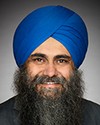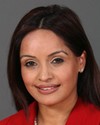The program on which we partnered with Coca-Cola is called Sogo Active. “Sogo” means nothing. Kids made it up. We did it all with a focus group of teenagers, and they made up the name, and they designed the protocols for Sogo Active. It is, as I mentioned, peer-led, youth inspiring youth to become more physically active.
Going back to Colin's question, we worked with one provincial-territorial coordinator in each of the 13 provinces and territories. At the same time, by the way, we were creating an English program as well as a French program. So we didn't translate the program. We created one with French Canadians, and we created one with English-speaking Canadians, and then we used our provincial-territorial coordinators and their networks in their provinces and territories to deploy the program like that. So within two and a half months, we had 10,000 youth involved in the program.
We get youth to define what physical activity is, and youth defines how to motivate kids to be more physically active, and they define how to communicate it. They told us that if it's not online they won't participate, so everything is online. It's a very cool program. You can go to sogoactive.com and have a look at it. We used our network of not-for-profit organizations to make that wildly successful.
ParticipACTION is tiny. There are 12 of us, so the way we deploy programs is through collaborative work with several of the organizations that are at this table today and those that are right across the country, in all 13 provinces and territories.
The second question you asked was about getting to all children and youth in the country. PHE Canada and ParticipACTION have actually been working for a couple of years with scientists from CSEP to design a school-based program. This, I think, is world-changing. It is bringing back the Canada Fitness Awards and the flexed-arm hang, but it's not having kids compete against kids, which can be the worst day of their lives for some children--I know. It actually involves a child starting at the beginning of the year and measuring their progress. So we can have a couch potato getting the award of excellence and we can have an elite athlete getting the award of excellence.
That's a program we would like to deploy right through all of the schools. We know how to do it. We've been working with scientists. We know how to evaluate it. It is ready to go, but it needs funding. And it needs at least $1.5 million a year, with a three- to five-year commitment to it. We're ready with the not-for-profit partners around the table and the researchers to deploy this thing. We know how to do it. We just need some funding. It's difficult to get private sector funding for this--I think Colin asked about that--because it is very difficult to have a private sector organization in schools. Schools are obviously very discerning. There are almost no private sector brands allowed in schools, so this does need the support of the federal government so that we can then work with provincial-territorial governments and have it in all 13 provinces and territories.
That is of my heart and soul, and I am determined that we will get that implemented at some point.




